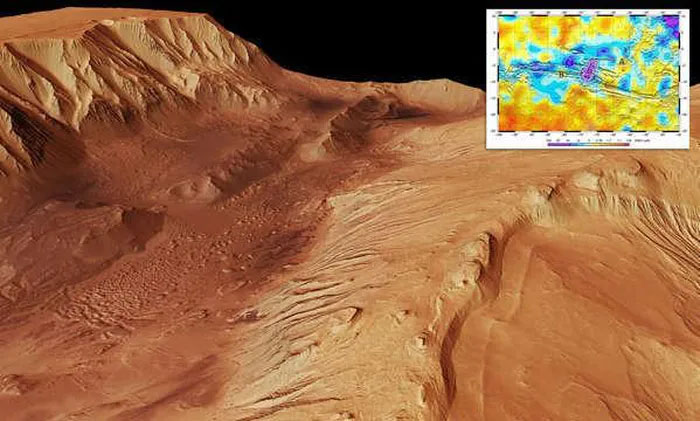ESA’s ExoMars spacecraft discovers “a significant amount of water” hidden beneath the surface of Mars in the Grand Canyon system.
The probe found a water region less than 1 meter from the surface of Valles Marineris, in the massive canyon system that stretches over 3,862 km on Mars.

Water region less than 1 meter from the surface of Valles Marineris
The area containing substantial water is roughly the size of the Netherlands and overlaps the deep valleys of Candor Chaos.
This is part of a canyon system that scientists believe holds great promise in the search for water on Mars.
Alexey Malakhov, from the Russian Academy of Sciences and a co-author of the study, stated: “We found that the central part of Valles Marineris contains more water than we expected. This is very similar to the permafrost regions on Earth, where water ice exists permanently beneath dry soil due to continuously low temperatures.”
Researchers analyzed FREND observations from May 2018 to February 2021, mapping the hydrogen content in Martian soil. FREND revealed an area with unusually high hydrogen levels in the vast canyon system of Valles Marineris.
If the hydrogen observed is linked to water molecules, then up to 40% of the material near the surface in this area could be water, likely existing in ice form.
For a long time, researchers have found evidence of water on Mars, but it has only been observed as ice deep underground. However, this recent discovery is one of the first findings searching for water near the surface of the Red Planet.
The first evidence of water on Mars was published by NASA in 2006. It consisted of images showing the presence of water at the two craters Terra Sirenum and Centauri Montes.
On July 31, 2008, NASA’s Phoenix Mars Lander confirmed the presence of water ice on Mars, containing components similar to water on Earth.
The Red Planet has several dry valleys and river channels, leading scientists to consider the possibility of liquid water flowing there in the past.
NASA’s current rover is traversing Mars to explore Jezero Crater, a lake that was filled with water approximately 3.5 billion years ago.


















































